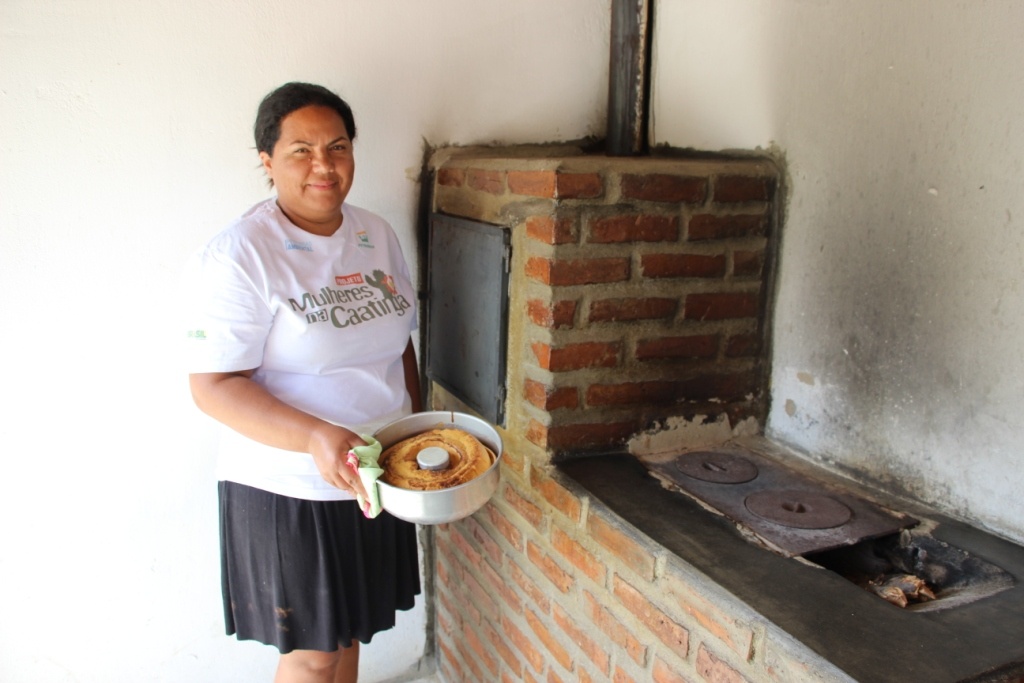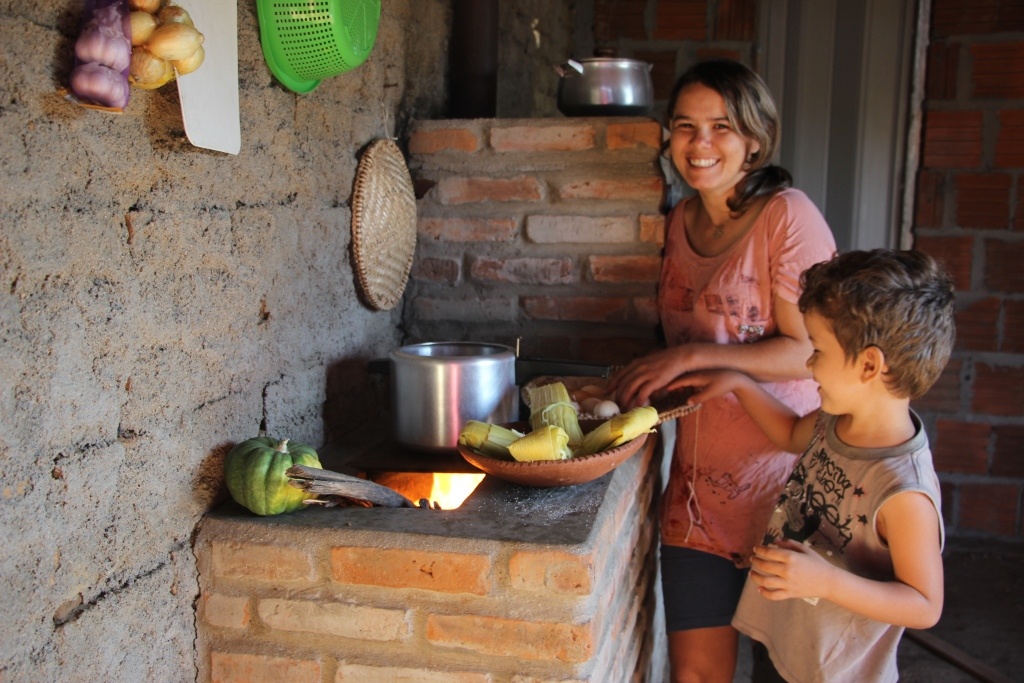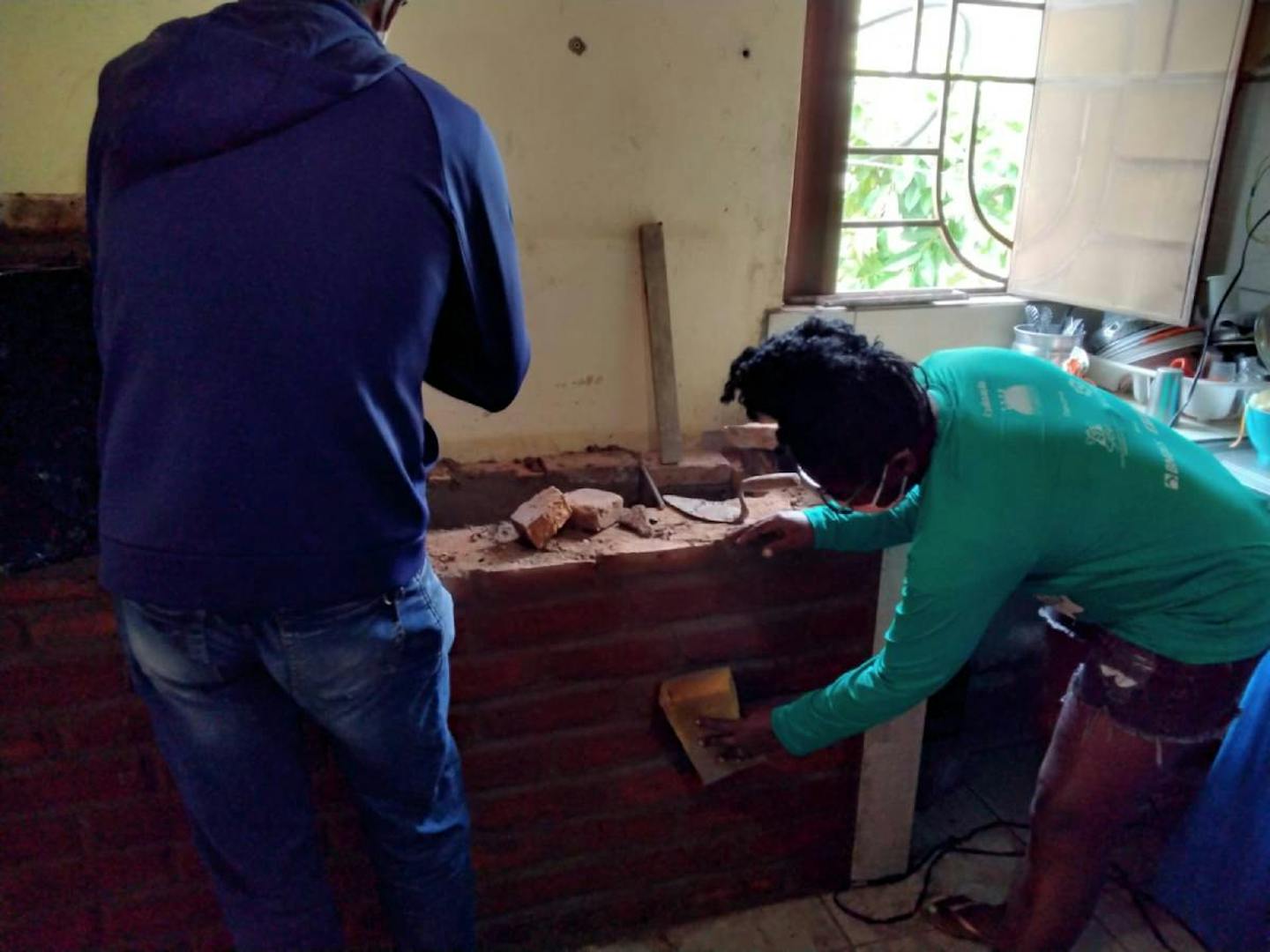Brazilian women cook up a new recipe for lowering emissions
- Renewable Energy
- Renewable Heat
- Energy Efficiency
- Sustainable Biomass
- Women
- Upper South America
- Southern America Realm
In the kitchens of women from the community of Feijão e Posse, located in Brazil’s arid Northeastern region, a stove very different from the rest almost goes unnoticed. It looks similar to the traditional woodfire stove used in many of the country’s rural areas, but its footprint is cleaner.
Maria José cooks for her family and bakes sweets for sale using an agroecological stove. First thing in the morning, she lights the fire with a small amount of organic material, such as sticks, corn on the cob, and coconut husks.
Mazé, as Maria José is known, now prepares food faster than when she used a wood stove. “It gets a lot hotter,” she notices. At night, the furnace is still heated enough to prepare dinner.
The agroecological stove uses so-called secondary firewood, such as timbers and other organic waste, and has greater energy efficiency than a wood stove. With the same volume of secondary firewood, women cook three weeks longer than they do with firewood on a traditional stove.
Agroecological stoves have replaced the traditional wood stove in many houses of the quilombo. Quilombos are communities formed by descendants of black enslaved Africans who fled from forced labor. They preserve customs and knowledge of their African cultures of origin.
At Feijão e Posse, cooking with firewood is one of these traditions. But the method brought many environmental problems to the region, such as the associated carbon dioxide emissions and the cutting of native trees.
“We used to look for firewood once a week,” says Maria José de Souza e Silva, a teacher, and neuropsychic-pedagogue. “I had to cut the wood and carry the basket on my head on my way home. We would walk about four kilometers to get it,” she recalls. Now they take the organic waste from their backyards and collect tree twigs, which are simpler to gather.
By extracting less firewood from the region’s native forests, the initiative has helped conserve the threatened landscape. In the Caatinga, an exclusively Brazilian arid biome with thorny plants and shrubs, much of the original forest has been cleared in recent decades. “For us, it's a joy to be able to cook without thick firewood because that's how we preserve our Jurema, Quebra-Caca, Angico trees, and so many others,” explained Mazé.
According to the Energy Engineering course coordinator at the Universidade PUC Minas, Angela Menin, the new cooking methods are essential to lower emissions.
“Every burning releases carbon dioxide into the atmosphere. The advantage of stoves with greater energy efficiency is precisely that they burn less material, as they are able to better conserve heat,” she explains.

Image credit: Courtesy of Marcela Martins de Souza
A new model
The stove is built in an “L” shape with a base made from bricks, sand, and cement. A combustion chamber is established, separate from the oven. Leaving a space of five centimeters on all sides, the oven is fitted for the circulation of hot smoke, which will make it heat up. The fire stays in the mouths, which are shaped like a ramp.
One of the great advantages of the model is energy efficiency. The new stoves use about three times less energy than the standard stoves and have similar costs. The price of hiring staff to build the device is around 150 reais (around 30 USD), while the construction material is around 500 reais (just over 100USD).
Menin explains that there is little difference in the chemistry of using methane gas or secondary firewood for burning. However, in the full cycle, the plant material is more sustainable.
Plants capture CO2 when they grow. Because of this, in the complete cycle of firewood, carbon dioxide is first absorbed and then emitted. In the oil cycle, emissions are produced, but they are never captured.
A cleaner alternative would be electricity in kitchens, Menin explains. However, this is still very expensive for rural families. The use of solar energy has been growing in the country, but not fast enough to replace firewood and gas in the medium term. This is the case for agroecological stoves, she argues

Women’s autonomy
The stove used in the community was developed by the non-governmental organization (NGO) Casa da Mulher do Nordeste (Northeast Women’s House), based on a model adapted with the help of women in the Pajeú region.
Most families in this area opt for firewood because of the high cost of gas cylinders in Brazil, around 18 USD. The average income of Brazilian families is 380 USD a month, and among low-income families, it is about 82 USD.
Casa da Mulher do Nordeste has been operating in the region for over 40 years. The NGO has a feminist base and works to strengthen women's autonomy. The stove was one of the strategies of a large project to value agroecological production in women's backyards.
Here, women also take on most of the housework, including cooking. They are the ones most in contact with the smoke from the woodstove and thus most exposed to the associated health risks. Women are also the ones who take care of children and older adults who get sick because of soot.
By changing the cooking devices, the project sought to add value to their local agriculture and mitigate health risks.
Graciete explains that one of the crucial points of the project is to train people to build stoves. “Men and women from the communities learn to make the stoves. Today it is one of the region's social technologies,” she states.
Community building and carbon-reducing agroecological stoves, while not perfect, are a step toward a more sustainable way of living in rural Brazil.



